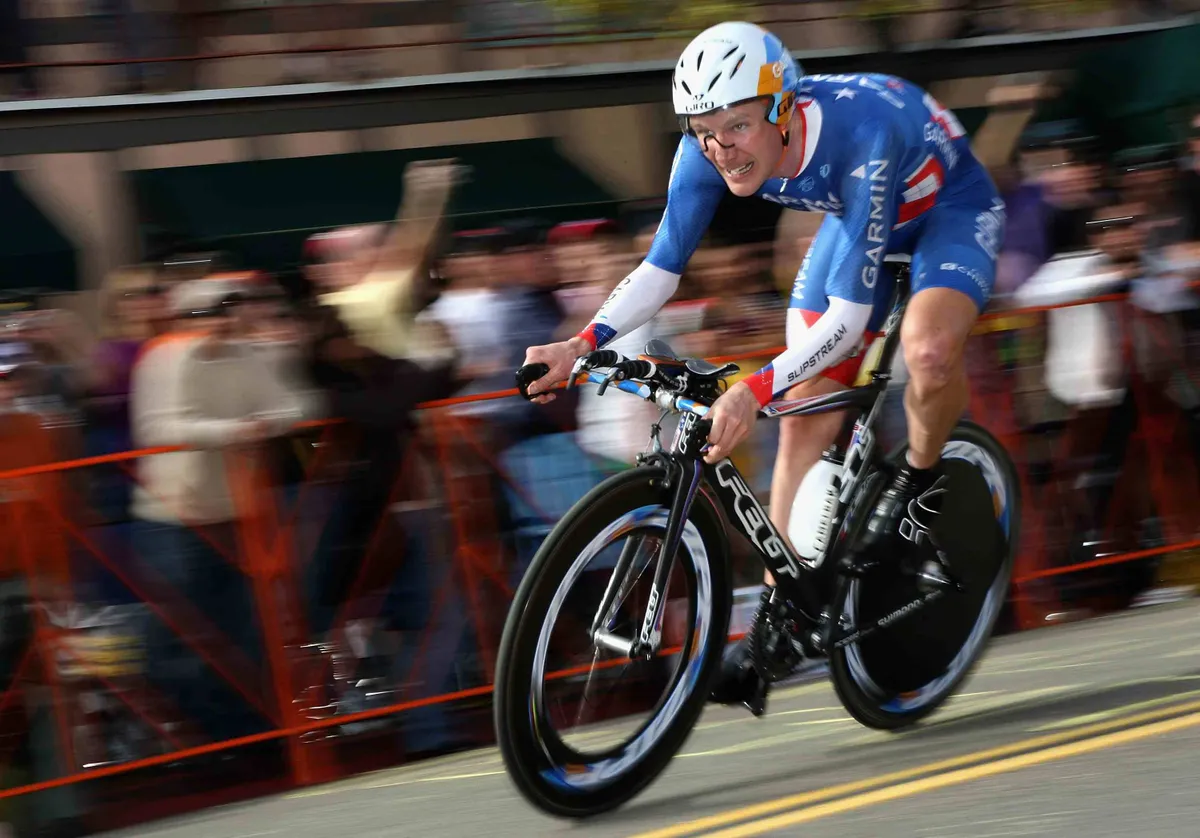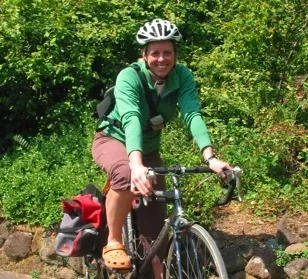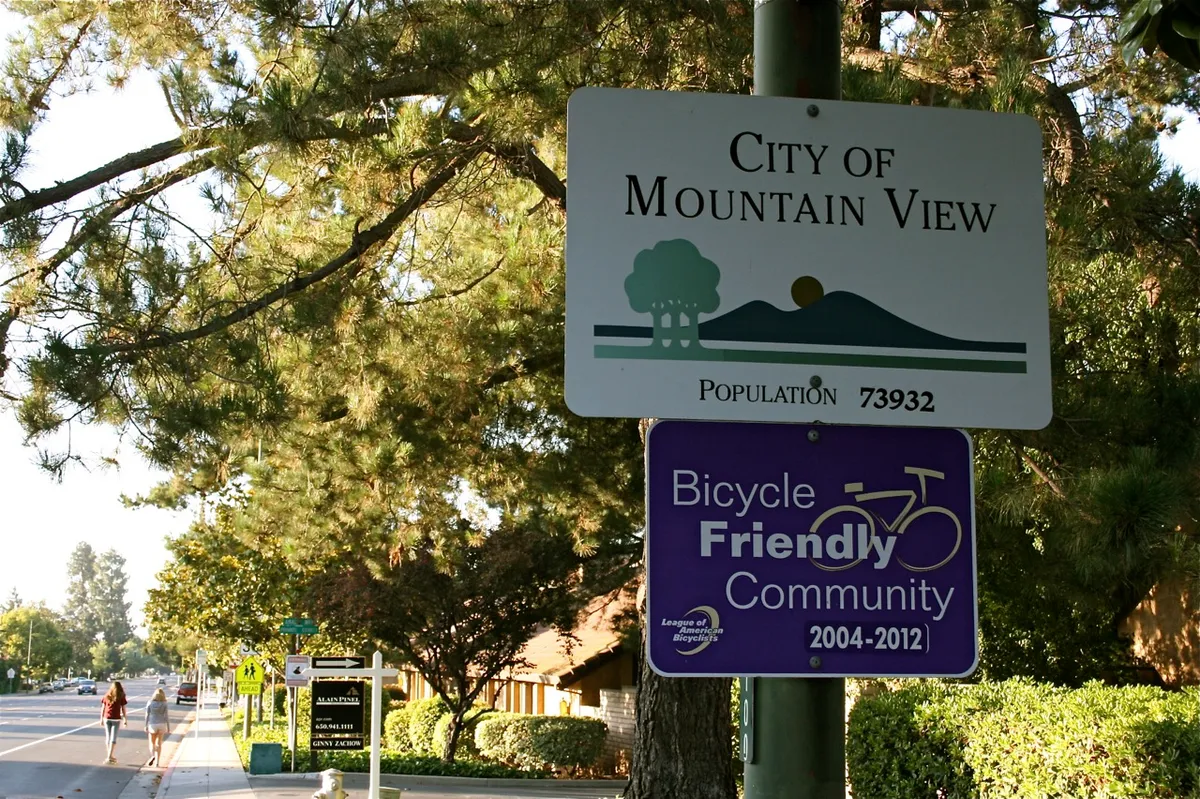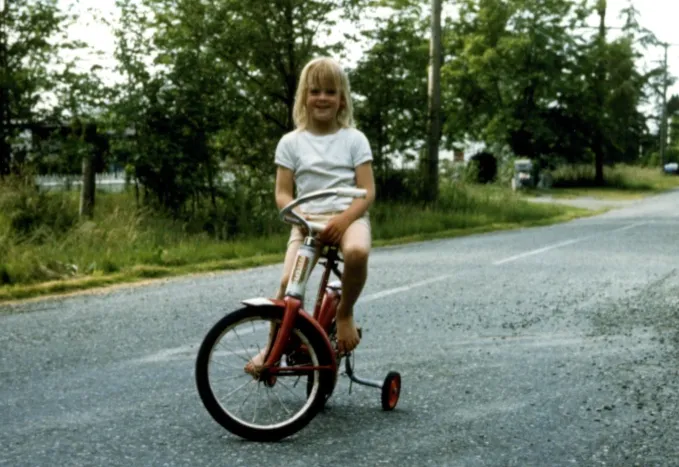Amanda Eichstaedt is the League of American Bicyclists' (LAB) board chairperson, a position she's held since 2006. The Olema, California resident has worked with some of the most effective bicycle advocates in the US, and oversees the oldest bicycle concern in the country, begun in 1880.
With a membership base of 300,000 affilated cyclists, 25,000-plus individuals and 700 affiliated organisations, the League has advanced greatly from the days of standing up for the rights of 'scorchers' against wagon drivers, horsemen and pedestrians. BikeRadar sat down with Eichstaedt, a former bike shop manager, at her bicycle-friendly Bear Valley Inn in West Marin County, California to find out more.
BikeRadar: Where do you see the future of cycling in America?
I believe we're moving in a direction in the US where bicycling is seen less as a “sport” or “leisure activity", and more of a viable and equitable means of transportation, while still being fun, good for you and a good thing to do in your free time as well.
I also believe that Minnesota Congressman James Oberstar’s work to accentuate the legal standing of bicyclists as part of the transportation system will go a long way towards catapulting the hard work of the League and other bicycling organizations.
How does America's cycling situation compare to the UK's, where cycle use is expanding rapidly, thanks in part to the tax-free Cycle to Work scheme?
The UK has faced many of the same challenges, in terms of encouraging bicycling and walking versus the convenience of the auto trip, that we do in many parts of the US. The UK is a much smaller place and often distances are shorter and the road network is sometimes more hospitable, with back-country roads and less travelled lanes, etc, than in some of the more recently developed parts of the US. I would think that some of the older, more fully developed areas (primarily urban) in the US would be more comparable to the UK.
The Tour de France is going on right now, and there's plenty of attention paid to guys like Lance Armstrong and Mark Cavendish. In your opinion, does racing help or hurt bicycling’s cause?
I used to think we needed bike racing heroes like many American kids have basketball heroes like Michael Jordan. Bicycle racing is a sport, and sports in general have had a rough patch with doping, etc. Now I'm not so sure that racing actually helps our cause.
Bicycling can be many things to many people: fitness, objects of desire, transportation means, etc.
Exactly! I think we need more guys like Dave Zabriskie, who is racing but takes the time to do something about cyclists' rights with his Yield to Life campaign. He's the type of athlete I wouldn't mind having work more closely with the League. He should take one of our safety classes!

Dave Zabriskie of the Garmin-Slipstream professional road racing team
The Bicycle Friendly America programme is important because we need to shift the paradigm about sharing the road .
And it's especially important with our children, who often aren't getting the proper training from their parents.
Exactly. We could all learn something if we're willing to learn.
How can Americans become more bike-focused on a daily basis?
If you think about America at large, you live in a very bike-friendly community. Here in Point Reyes, there's no real shoulder, which makes it a risk for many newer cyclists compared to those riding in a more suburban area.
A lot of this is getting people over the fear of getting run over, and understanding risk. Cyclists need to be recognized and identified by motorists. We're very vulnerable riding in traffic but there's a safe way to co-exist. It just takes education.
There's a perception that driving a car is safe, yet look at how we have to strap ourselves in before we step on the gas pedal. We learn proper driving in high school, then get better the more we drive, but there's continuing education about how to and not to do things. With bicycles it's different.
Bicycling seems riskier than driving because we've attached so much emotion to it. Maybe it has to do with the emancipation of women on bicycles in Susan B Anthony's days, or riding a bicycle built for two. Maybe we've put too much emphasis on bicycling as a social thing. With risk management, one can talk themselves into riding a bike, especially when you factor in the positive benefits: personal health and better air quality for everyone.
Which European model would you like to see America's cycling advocates replicate?
The US needs to forge its own way and not be reliant on modeling an overall system on any one European location. Different aspects of things that have been successful, whether it’s education, encouragement, enforcement, evaluation or engineering in other places, can be studied and put into the context of US cycling.
I believe the concept of equity, the sixth E (the other five being mentioned previously), is the most important thing that we can do, and then perhaps we will be a model for other countries as they develop cycling systems.
How and when did you get involved with the League?
I went to work for the city of Palo Alto, California as its city transportation co-ordinator in 1999. A lot of elderly people were honked off at what they perceived as reckless cycling... so I asked John Ciccarelli, a League-certified trainer based in Palo Alto, to teach 10 classes. [Ed: The League's BikeEd programme offers the only nationwide instructor certification programme. More than 200 new League Cycling Instructors (LCI) were certified in 2005.]
I was a lifelong cyclist and didn't think there was anything new to learn, but because I had the key to the meeting room I had to be there. I actually learned two things that probably saved my life down the road – how to avoid getting doored while riding, and staying left of the stripe.

Eichstaedt and her husband Ken ride often in Marin County, California
I realized that to continue forward without any budget I would have to become an instructor. We wrote a grant application to Bikes Belong to start the Bay Area bicycle education programme, training 20 people to become certified by the League.
The League sent us a pretest for everyone to take. We received the wrong answer keys, which meant everyone got lousy results. That's when I felt the need to get involved at League level.
That was in 2001. I contacted them about running for a position on the board, and somehow I was elected to the Region 6 director position in 2002. Two more years and I'm termed out. I've been the board chair for three years.
How many members does the LAB have today? What was its peak and when?
Approximately 30,000-40,000. We peaked at 100,000 members back in the days when roads were being paved at the turn of the last century.
What does the League board chairperson do? Is it a paid position?
No; in fact WE pay! There's a board development goal: give, get or get out. It's the harsh reality of being on a non-profit board of directors.
My role is setting long-term strategy, monitoring finances and making sure the organisation is running efficiently and everyone is financially responsible. It's the most unsexy, most tedious element of all bicycle advocacy... I can try to push my own agenda, but these responsibilities are most important.
Bicycle safety is a big deal to me, and why I got involved in the first place. Cyclists' rights is another big personal item, and this is what the League was founded upon 100-plus years ago. We're focusing on this issue once again, and hoping to ramp up with partnerships, curriculums and staffing.
What’s the LAB’s annual budget? Where does the largest percentage of its resources go?
Just over US$1.5 million. The largest percentage goes to staffing, because programmes need to get done with manpower. We receive grant money from some bigger foundations like Robert Wood Johnson, and some of the other big health foundations have been funders in the past. Our revenue also comes from the industry, individual members and donors, plus some programming. There's not a whole lot of money left over each year.
How does the League differ from organisations like Bikes Belong, the International Mountain Biking Association (IMBA) and the Alliance for Biking & Walking (formerly the Thunderhead Alliance)?
The League is the oldest. My take on it is that the League belongs to the individual cyclists; it's their organisation. There are organisational members of the League but they don't have an individual vote.
We're looking at ways of increasing membership nationally to get more people voting, because our current member base don't make their voices heard as much as I'd like. We also need to update our membership database – which is archaic – and move our efforts to the next level.
The League still has a strong relevance. Our strengths include defending cyclists' rights, education and Bicycle Friendly Communities/States programmes, which are getting stronger.

Mountain View, California is a League-bestowed Bicycle Friendly Community
Bikes Belong is linked more to the bicycle industry, the manufacturers. They lean toward research and policy, and also have a separate foundation to raise money to give away in the form of grants to grassroot groups. The League administers programmes, but isn't in the business of providing grants.
Thunderhead formed when the League dropped the ball on state and local advocacy. I'm excited to see the two groups located near each other in Washington DC, with joint funding from SRAM for some of the Bicycle Friendly Community programming. It's important that our two groups work together.
How do you partner with them, and not have to compete for the same support money?
They train advocates, enabling them to start local advocacy groups and grassroots coalitions. Shared funding goes toward the Bicycle Friendly America programme, which elevates smaller regions to increase bicycle awareness and programming, which in turn gets elected officials involved, which brings national effort to that cause. That's when the League gets involved, so you can see how it all works together.
Other national players include the Rails-to-Trails Conservancy, International Mountain Bicycling Association (IMBA), Adventure Cycling Association and some others. Our annual National Bike Summit in Washington brings everyone together and strengthens our efforts nationwide. It's really not our ballywick to go out and start talking about wilderness areas, trail access and singletrack. We work to support their efforts the best we can.
Who do you admire in the bike advocacy world and why?
Ellen Fletcher, who was involved in Palo Alto politics for years. She was an elected official, and was an inspiration for me. She made policy decisions that were based on bicycling, and I was fortunate to work with her during my time in Palo Alto. Jeff Miller of the Alliance for his enthusiastic, positive, can-do attitude – he's great at coalition building. Our own president Andy Clarke, of course.
Leah Shahum, who has been the executive director of the San Francisco Bicycle Coalition since 2002. Deb Hubsmith in Marin County, in terms of her savvy with the Safe Routes to School national programme. John Forrester, the author of Effective Cycling, even though we've locked horns over the years, has influenced so many groups. The women in the Bay Area...; Transportation Alternatives in New York; Randy Neufeld in Chicago... the list is long.
Then we have the attorneys like (former road racing Olympian) Bob Mionske and Gary Brustin who champion cyclists' legal rights. There were 600 attendees at the 2009 National Bike Summit, which means a big movement is happening.

